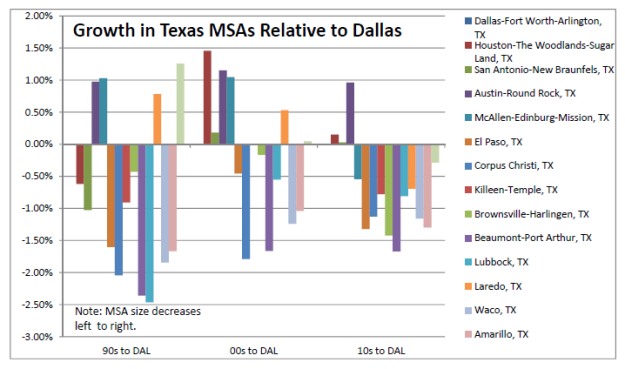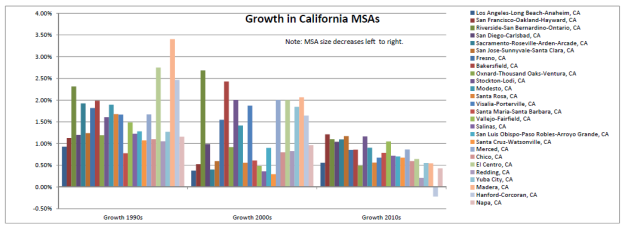In the wake of the failure of SB 827 to make it out of committee, there has been a lot of discussion of how cities should grow, and a lot of social media ink spilled over who is to blame for the housing crisis, to put it mildly. I think it’s useful to take a step back and remember what the larger state of play for housing in California looks like.
SB 827 Did Not Fail Due to Left Opposition
Like many people in YIMBY groups, I was disappointed that left groups like the Democratic Socialists of America (DSA) chose to not support SB 827, even after it was amended to include many tenant protections that do not exist today. This seemed like a departure from the DSA Los Angeles (DSA-LA) stance on Measure S, which held that they “distinguish between developers and development” and that existing restrictions on apartment construction, which would have been undone by SB 827, were “pushed by wealthy property owners who did not want apartments built in their neighborhoods.”
On the other hand, it perhaps should not be too surprising that socialists would not support a bill that largely depends on private construction. The DSA-LA endorsement of No on S also stated that the housing crisis “must be understood through a critical lens as an outcome of capitalism,” a lens that I certainly disagree with, but would likely lead one to oppose SB 827.
However, the DSA and similar left groups are relatively minor players in state politics. YIMBY groups were the force behind the election of one state politician, Senator Scott Wiener; left groups have elected none. The driving force behind the failure of SB 827 was opposition from the same players that have thwarted both market-rate and public housing construction in middle class and upscale neighborhoods for decades.
Opposition from Entitled Incumbents is Still the Problem
The sniping conversation between YIMBYs and leftists is unproductive, and probably counterproductive, but mainly irrelevant.
The Los Angeles City Council voted to oppose SB 827, and they didn’t do it because they decided they like the People’s Policy Project plan for social housing better. Mayor Garcetti initially said he would support the bill if it included tenant protections and was then forced to flip flop when Senator Wiener added those protections, saying that apartments would look out of place in single-family neighborhoods. The council and the mayor didn’t decide they want social housing in single-family neighborhoods, they decided they want no new housing there.
People from the most insufferably entitled jurisdictions in the state, such as Beverly Hills Vice Mayor John Mirisch and Marin County columnist Dick Spotswood, turned up to oppose SB 827. While they are happy to cloak their opposition in social justice rhetoric, (hopefully) no one is under the delusion that they are going to support a social housing program instead.
Overwhelmingly, the opposition to new housing of all types comes from these well-off communities. They fought public housing in the brief era that the federal government tried to build it, and they fought market-rate housing when the private sector tried to build that. Overcoming this widespread opposition remains the primary challenge in solving the housing crisis, no matter what solution is pursued.
This reality is strangely absent from some takes on the crisis, such as Steve Randy Waldman’s long-standing position that YIMBYs are bad and we should solve the housing crisis with “new towns” such as are built in Singapore (or Hong Kong or other Asian countries). Waldman argues that rather than adding density to existing neighborhoods, we should “[build] out extremely dense but nevertheless green, livable, and attractive ‘new towns’… and when we run out of space for those, new ring cities?”
Leaving aside Singapore’s dual housing market (subsidized for citizens, very high rents for immigrants), where exactly would these new towns be built in California without opposition? Like, name me one site in the Bay Area or LA where this could happen without opposition! In fact, the status quo forces the construction of new towns on the suburban fringe, for example Winchester Ranch or Mountain House or Ontario Ranch. I would love to drop a Hong Kong style new town on top of a greenfield high-speed rail stop in Palmdale. The reason these places are not denser than they are is the same reason that Cheviot Hills doesn’t get denser than it is.
Building Housing Costs a Lot of Money
Moving past local opposition, another common problem to all types of housing is that it is expensive to build. The cheapest new market-rate construction in California, in places like the Victor Valley and the Central Valley, starts around $200k, and in LA County, it’s around $450k. Non-profit affordable housing builders face similar costs. Building even one unit of housing takes a lot of capital.
Meanwhile, California’s housing shortage, built up over decades, is huge. We need hundreds of thousands of new housing units in LA County alone. At $500k a pop, half a million housing units in LA County would cost $250 billion. If you could lower it to $300k per house, that would be $150b. No matter who is building the housing – public or private sector – that’s a lot of money. Policies that reduce the cost of construction per unit, such as lower impact fees, low or no minimum parking requirements, higher density, and no minimum unit sizes, will help solve the crisis, no matter who builds the housing. In addition, allowing higher density in more places may reduce the cost of land, by increasing the supply of places you can build.
The People’s Policy Project proposal tries to circumvent this problem by suggesting that the first round of social housing be built on land that cities already own, and then use the profits from those buildings to acquire more land and construct more social housing. Lower cost of land would benefit this proposal as well, but the immediate problem is that most cities don’t own enough vacant land in the right places to make this work. The mistake is the assumption that most profits are going to developers, when most likely the profits are going to incumbent land owners.
Amenity Effects are Real
The concerns of neighborhood activists that new construction might displace existing residents are not unreasonable. Amenity effects are real. If a new building with a Whole Foods in it opens up, it is a signal to people that shop at Whole Foods that this is a neighborhood you might want to live in. Things that make a neighborhood a more desirable place to live make more people want to live there. There’s a reason gentrification always seems to keep moving one more neighborhood to the east, from Silver Lake, to Echo Park, to Highland Park, to Lincoln Heights.
At the same time, the status quo is also not working at preventing gentrification. And the challenges there are similar for all types of housing. Lowering the cost of building new housing would decrease the price difference between new housing and existing housing, which should help, and it would help no matter who builds the housing.
Whether it’s market rate or social housing, the amount of new housing built in a neighborhood is likely to be small relative to the amount of existing housing, and the existing housing is where the concern lies. New housing, even under the People’s Policy Project Plan, is likely to have higher rents than existing housing because it hasn’t had time to filter. Either way, the problems experienced by existing low-income tenants in existing housing will need to be addressed with stronger tenant protections.
Agglomeration Effects are Real
Another take that seems to have proliferated recently is that instead of having more people move to California, we should make other places more prosperous. Kevin Drum laid out the case for this in Mother Jones.
As someone with family roots in Appalachia, let me just point out that if making other places more prosperous was as easy saying, “Siri, fix the economy of the coal region,” someone would have done it already. After decades of decline, the I-81 corridor has recently seen some growth due to e-commerce entities like Amazon killing malls and needing huge distribution centers. But it’s certainly not anything that economic planners saw coming.
I will also point out that the people pitching you this idea never think of themselves as the one who is going to have to leave California and move somewhere else, and they’re probably not telling you that you will have to leave either. It’s similar to the “don’t tax you, don’t tax me, tax that guy behind the tree” theory of taxation. It’s worth stating out loud what the actual policy would be here: obtain political power and use it to either force people out of a city or prevent new immigrants from moving in. The people who would lose would be the people with the least political power. We have a status quo very much like that today, and I don’t care to trade it for a similar situation but with different people losing.
Now, there are some things we know are good for your local economy, for example, having a major state university located in your city. Sitting on top of giant oil and gas deposits seems to work pretty well too. But these are obviously not strategies that can be applied to every place. My impression is that it’s hard to know what places are going to grow and what places aren’t, and the right thing to do is create opportunity for everyone in the places that are growing. So no matter who builds the housing, we need to figure out a way to do it in growing cities and make it work for everyone.
Finally, this solution does nothing to address the concerns of gentrification. We already have de facto caps on the population of many cities in California. A growing economy makes people want to move to LA, and all a population cap would do is accelerate the displacement of lower income people.
Conclusion
Even though SB 827 failed to make it out of committee, it helped move the window on housing in California, which is a good thing. However, the political landscape has not changed much. The primary obstacles to new housing are the same as they were, and the bad policies that prevent new housing from being built are the same. Removing those obstacles and changing those policies will help – indeed, is probably prerequisite to – any housing construction program that has a chance of solving CA’s housing crisis. The sooner we can do it, the better off we’ll be.



































